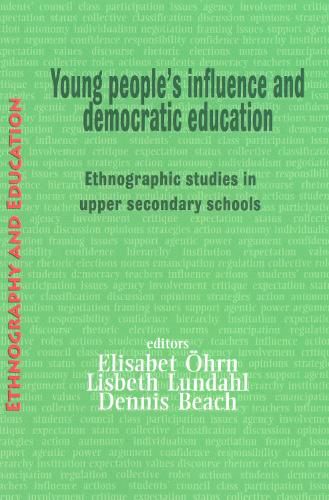Readings Newsletter
Become a Readings Member to make your shopping experience even easier.
Sign in or sign up for free!
You’re not far away from qualifying for FREE standard shipping within Australia
You’ve qualified for FREE standard shipping within Australia
The cart is loading…






This title is printed to order. This book may have been self-published. If so, we cannot guarantee the quality of the content. In the main most books will have gone through the editing process however some may not. We therefore suggest that you be aware of this before ordering this book. If in doubt check either the author or publisher’s details as we are unable to accept any returns unless they are faulty. Please contact us if you have any questions.
The teaching and practice of democracy in schools might be considered particularly important in the present era as young people are spending increasing amounts of time in education. Upper secondary schools and universities are becoming more common post-school options than conventional workplaces. Consequently, the experience of democratic participation among the young people is strongly related to education spaces. Contemporary research shows the teaching of democratic values to typically emphasise individual freedom of choice and individual rights, at the expense of collective justice, political criticism and reflection. This risks leaving young people without guidance for how to exert influence both inside school and more generally. However, we lack knowledge about the relations between the content and organisation of teaching, and young people’s attitudes and actions, as they typically constitute different research fields. This book attempts to help bridge this gap. Young people’s influence and democratic education explores the teaching of democracy in school. In particular it relates to young peoples’ responses and initiatives to change in formal education. Based on recent ethnographic investigations of Swedish upper secondary schools the book has been developed with a special focus on gender in relation to social background. Five differently gendered and classed upper secondary programmes were studied in detail. Theoretically, the book draws in particular on Bernsteinian and feminist perspectives. The book includes close individual analyses of the researched upper secondary classes as well as common presentations of previous research, theory and main empirical results. Central joint themes that are explored concerns teaching students to influence, student initiatives to exert influence, conditions for developing valued masculinities and femininities, the reproduction of hierarchical relations, and representations and relations of theory and practice.
$9.00 standard shipping within Australia
FREE standard shipping within Australia for orders over $100.00
Express & International shipping calculated at checkout
This title is printed to order. This book may have been self-published. If so, we cannot guarantee the quality of the content. In the main most books will have gone through the editing process however some may not. We therefore suggest that you be aware of this before ordering this book. If in doubt check either the author or publisher’s details as we are unable to accept any returns unless they are faulty. Please contact us if you have any questions.
The teaching and practice of democracy in schools might be considered particularly important in the present era as young people are spending increasing amounts of time in education. Upper secondary schools and universities are becoming more common post-school options than conventional workplaces. Consequently, the experience of democratic participation among the young people is strongly related to education spaces. Contemporary research shows the teaching of democratic values to typically emphasise individual freedom of choice and individual rights, at the expense of collective justice, political criticism and reflection. This risks leaving young people without guidance for how to exert influence both inside school and more generally. However, we lack knowledge about the relations between the content and organisation of teaching, and young people’s attitudes and actions, as they typically constitute different research fields. This book attempts to help bridge this gap. Young people’s influence and democratic education explores the teaching of democracy in school. In particular it relates to young peoples’ responses and initiatives to change in formal education. Based on recent ethnographic investigations of Swedish upper secondary schools the book has been developed with a special focus on gender in relation to social background. Five differently gendered and classed upper secondary programmes were studied in detail. Theoretically, the book draws in particular on Bernsteinian and feminist perspectives. The book includes close individual analyses of the researched upper secondary classes as well as common presentations of previous research, theory and main empirical results. Central joint themes that are explored concerns teaching students to influence, student initiatives to exert influence, conditions for developing valued masculinities and femininities, the reproduction of hierarchical relations, and representations and relations of theory and practice.